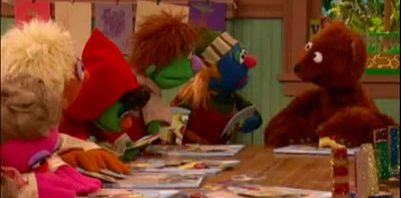The first of four case study posts about my presentation for Western States Folklore Society’s Annual Meeting in April 2018. Introduced here, the presentation was titled Princess and the Letter P: Fairy Tales and Edutainment in Preschool Television. The other case studies can be found here. Sesame Street started in 1969 as one of the most groundbreaking shows in preschool television, originating the form of the pedagogical, publicly funded children’s show. The creators of Sesame Street had everything from a “pedagogical …
Continue reading “Edutainment Strategies: Sesame Street’s Story Book Community School”

